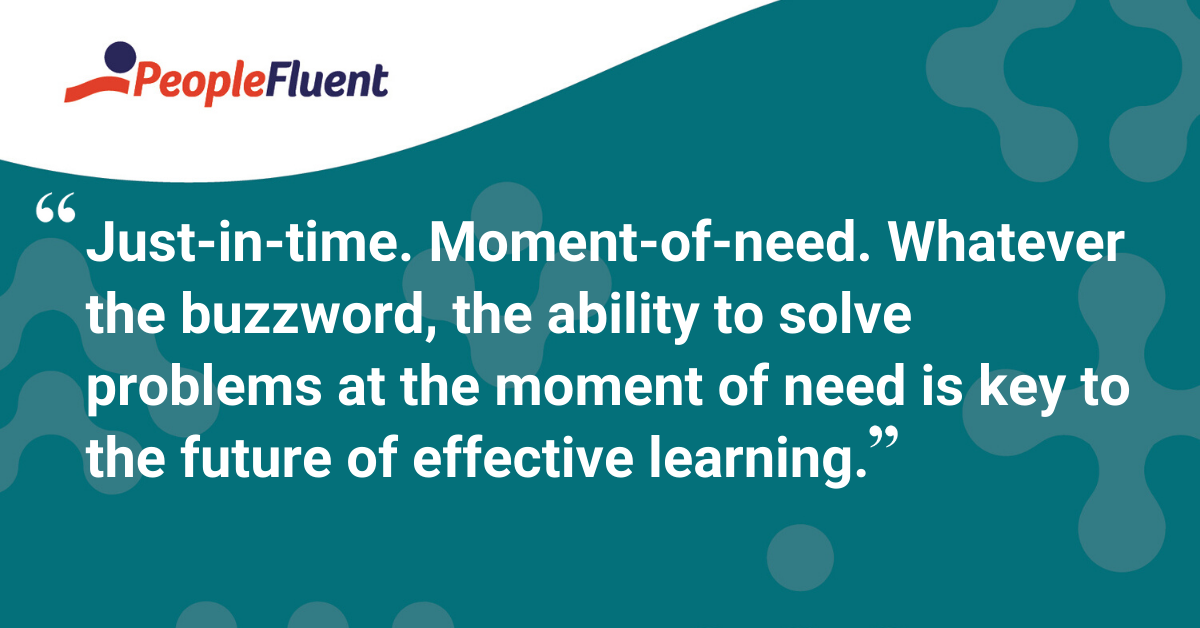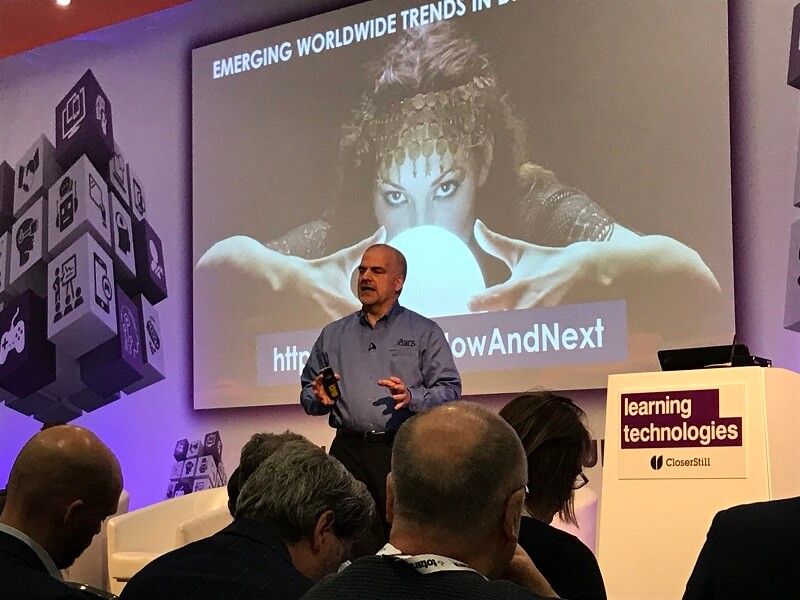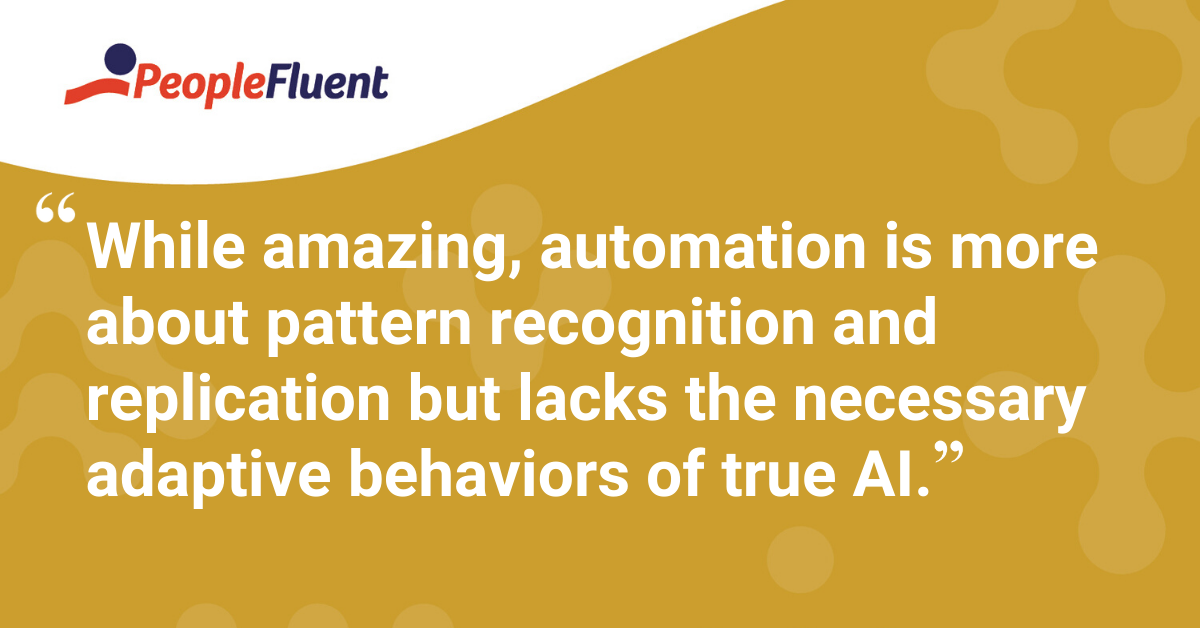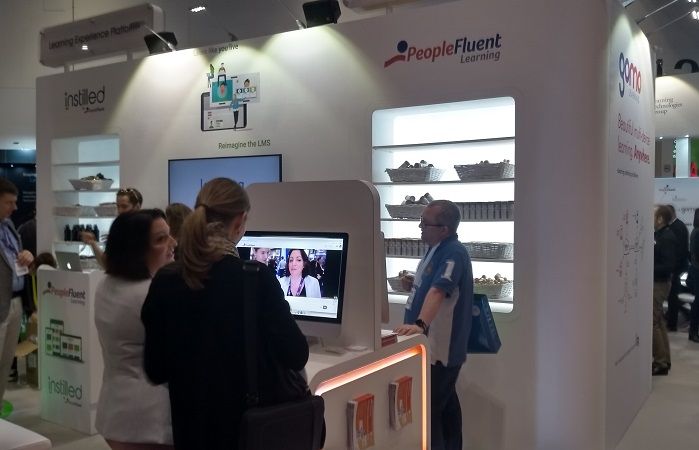Published: Feb 17, 2020Time to read: 8mins Category: Learning
LT 2020 & the Trends Shaping Workplace Learning
With over 8,500 attendees, 200 exhibitors, and over 200 lectures to choose from, there was only one place to be this week if learning technologies is your thing: Learning Technologies 2020. Stepping into the hustle and bustle of Europe’s biggest learning conference is quite the immersive experience. No headset required here, though!
From personalized learner experiences and just-in-time learning, to the emerging influence of neuroscience, there was plenty to get excited about. Looking further afield, the demands for reskilling and an emphasis on catering for how people informally learn in ‘real-life’ are influences that will shape the future of workplace learning.

We scoured both the conference and the expo for the latest insights and trends—we couldn’t write about them all, so here are our highlights:
“Life, Work, and Learning in the Personalized Century”
The ‘mass century’ has passed, and we’re now truly living in the ‘personalized century’, proposed writer and broadcaster Timandra Harkness in the keynote speech on day #1.
From mass media, mass production and even mass politics, society has moved to the personal, where individual identity is valued (and catered for) more than ever before. Algorithms target everything from news feeds to advertising, with even car manufacturer Mini rolling out a production line tailored to individual specifications.
It’s clear society’s norms have changed, and it’s a lesson the learning industry needs to take heed of. Personalized learning is not the future—it’s the present. Powered by ‘big data’ and measurement strategies, there’s no ignoring it.
Top Learning Technology Trends of 2020

David Kelly, Executive Director at eLearning Guild, introduced some of the key trends shaping digital learning in the workplace in 2020:
- Multi-device learning - The demand for beautiful, multi-device content isn’t anything new, but to truly innovate, mobile learning design can no longer be seen as ‘making desktop work for different screens’. Features such as GPS, data capture and geo-location offer a whole world of exciting innovations that are ignored with ‘responsive’ thinking.
- Interactive video - Moving on from ‘interactive’ branching scenarios, the future of interactive video will be shaped by powerful metadata that will make video content (e.g. speech via auto-subtitles) truly searchable. The result? Video results available at a learner’s moment of need.
- Data and analytics - Advances in capturing data throughout the learner journey give us the power to make informed decisions like never before.
- Augmented Reality (AR) - The move to headsets is improving the effectiveness that augmented reality can have on the learner experience. But so is its use in daily job roles. So will the future of learning shift to onboarding employees on how to use the technology?
- Workflow learning - Just-in-time. Moment-of-need. Whatever the buzzword, the ability to solve problems at the moment of need is key to the future of effective learning in the workplace.
- Artificial Intelligence (AI) - It’s not simply humans vs computers. The negative perception of this topic hides the fact that this will drive massive reskilling demands on workplaces. Challenging? Yes. But early adopters can thrive.
- ‘The internet of things’ - The future data capture possibilities are endless. In the same way that an Apple watch can monitor heartbeats and suggest a visit to a GP ahead of a predicted heart attack, the vision for ‘predictive learning’ is starting to emerge.

How Will Technology Change the Future of Workplace Learning?
Chris Pirie, CEO of The Learning Futures Group and CLO of Microsoft Global Field, explored the stories behind inspiring disruptors in the learning sector. They highlight how embracing ‘future’ technology can disrupt and become the ‘new norm’.
The Fourth Industrial Revolution Is Already Here
Disruptive technologies such as AI and data capture are changing the shape of work as we know it. In 2018, 1 in 3 Americans carried out freelance work. In Kenya in 2019, only 5% of school leavers will find permanent employment. This left a surplus of 1 million smartphone savvy job-hunters in 2019 alone.
The Shujaaz app showcases how early adopters of technology can intelligently disrupt to solve problems and meet huge demands. Created in 2010 in response to Kenya’s employment crisis, the app now uses data from over 6 million users to inform strategies to further support entrepreneurs.
“Here Come the Learning Scientists”
Data Science. Computer Science. NeuroScience. Social Science. All of these fields of expertise are making waves in everyday workplace learning.
Neuroscience is exploring areas such as the implications of sleep on effective learning and performance change, while ‘embracing failure’ has been taken a step further with Airbnb’s ‘The Failure Academy’. This showcases the learning principles of creating ‘safe’ environments, where experimenting and learning from failure encourages personal growth.
Similarly, Babbel has over 5 million learners on its books, and uses social scientists to analyze both success stories and failures. This approach explores trends and analyzes data to adapt and improve future learner journeys.
- David Kelly, Emerging Technologies talk.
Technology Changes Are Driving the Demand for Reskilling
The disruption that intelligent automation will have on the workplace is already placing a huge demand on reskilling staff. And it’s a trend that will only increase, as service-based and rule-based job roles will see increased automation. This in turn shifts demand towards soft skills such as leadership and creative problem-solving (a key takeaway from LinkedIn’s 2020 Workplace Learning Report).
You can explore this topic in-depth in the white paper ‘A Human Framework for Reskilling: How 5 Seismic Forces Are Driving the Reinvention of Learning & Talent’ from our parent company, Learning Technologies Group.
Perceptions Over AI Mask Underlying Talent Challenges

Day #2 of LT 2020 kicked off on a familiar theme: Artificial Intelligence. Daniel J. Hulme’s keynote was capped off with an amusing piece of reassurance summarizing 20 years of thinking about AI: “We’ll be alright”. Though a well-worn topic (considering the impending economic and technological singularities which threaten to change the nature of work), the talk did have some interesting things to say about the hype of ‘AI’ within Learning.
Most significantly, Hulme (CEO of Satalia and Director of UCL’s Business Analytics) suggested that everyone who claims they’re doing AI isn’t—largely what we have is automation. While amazing, automation is more about pattern recognition and replication but lacks the necessary adaptive behaviors of true AI.
He also cautions that companies don’t have data science problems, but decision problems—and they need to hire accordingly. As he suggests, the big battleground isn’t technology, it’s talent. As a result, technology that solves attracting talent will be a key differentiator going forward.
Enabling Connected Learning With xAPI
xAPI, and ideas on how to implement it, continues to be a fixture on conference schedules. Megan Torrance’s claim that most functions in organizations have better data than L&D (e.g. via Google Analytics, Salesforce) had more than a few delegates nodding knowingly.
Richard Pedley, a Learning Project Manager at Fidelity International, demonstrated this with a case study for his team’s first non-mandatory learning program. The Fidelity team wanted to engage employee’s sense of curiosity about learning. xAPI facilitated communication between several distinct systems in their ecosystem: content authoring tool Gomo Learning, Watershed LRS, an existing LMS and Sharepoint.
Interestingly, xAPI also appeared within Melissa Milloway’s User Experience-focussed talk, alongside more traditional user-feedback methods such as using surveys and usability tests.
In a live demonstration, a member of the audience completed tasks on a test website, which displayed corresponding real-time xAPI statements. This use of xAPI as a UX tool echoed the sentiments of the earlier talk, proving xAPI has applications outside of measuring learning success.
Recommended related reading: 'The 13 Must-Have Features of a Learning Management
And That’s a Wrap for Now
So as we stepped away from the conference, we reflected that across the learning industry, organizations and individuals face many common challenges. It’s always refreshing to hear different viewpoints on how to overcome these challenges—whether from keynote speakers and SMEs, or equally from fellow attendees.
One thing that’s undoubtedly clear, is that the learning sector is armed with a desire to innovate, and it has the willingness—and the technology—to do so.

A version of this post originally appeared on the LEO Learning blog.
Discover How Learning Builds Skills and Ensures Compliance
Design, deploy, track, analyze, and report on enterprise learning and compliance programs. PeopleFluent helps you execute your programs seamlessly, so employees upgrade their skills and you get results.